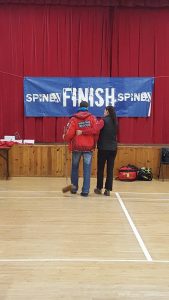I was having a chat with another runner recently about running, injuries and the prevalence of injuries to runners of all types. The conversation mostly focused around chronic injuries rather than acute- “ow, I’ve run into a tree” type injuries. I did a bit of digging and a bit of thinking and ended up with something that turned into this blog.
Interesting stat: The biggest predictor of being injured as a runner is not to do with mileage, climb, time on feet, running surface, shoe type or anything like that; it is the answer to the question “have you been injured in the past year?” If the answer is *yes* then you have a greater chance of being injured this year. (Van der Worp 2015)
Acute injuries in running are relatively rare. 80% are overuse – a mismatch of resilience of connective and supporting tissue and running. The most common area of injury is the back and lower leg.
With that in mind, here are a few things to think about which *tend* to be truisms about non acute injuries:
Most running injuries seem to come from easily convertible issues (from BJSM- Devin McFadden):
- Training Error– biting off more than you can chew (excessive volume/intensity/sudden change)
- Faulty technique – (Hip abduction weakness/ cadence etc)
- Inadequate recovery (from a hard session/ cumulative excessive fatigue etc.)
When you think about any activity, and want to get better at it, doing that thing once every 7 days generally is not  enough stimulus to get better at it, equally, doing it ALL the time is probably not going to be so useful either. This is true for learning a language, gaining a skill, or creating resilience in body tissues to enable you to do a certain thing.
enough stimulus to get better at it, equally, doing it ALL the time is probably not going to be so useful either. This is true for learning a language, gaining a skill, or creating resilience in body tissues to enable you to do a certain thing.
Running once a week is simply not enough to enable you to become resilient enough. There is not enough stimulus for the body to adapt – and that is what you need to do – create just the right amount of distress for the tissues and cardiovascular system etc to adapt without going into crisis.
If there is not enough stimulus there will be no adaptation.
However – if there is not enough recovery between stimuli, there will be distress, not adaptation, and that ends up on the injury route.
Injury should not be avoided by minimising stress – but rather, should be avoided through optimising the amount and frequency of loading stress. There must be an optimal level of applied stress for any biological tissue. Again, this is pretty much another way of saying “do enough to adapt, but don’t do so much that you break”. Easy to do, much more difficult in practice.

A day when I definitely had porridge that was “too hot”
When running is compromised because of fatigue or accumulated injury our capacity to disperse mechanical stress diminishes and our vulnerability to overuse injury escalates. In other words, the message here is that running itself is generally ok. However, when you’re tired, muscles are fatigued and the forces that are put through the musculo-skeletal system are no longer able to be controlled by your muscles/bones etc. that is when overuse injury happens. By all means run in a fatigued state, in fact, that is a good way to build resilience, however, be aware that more recovery time may be needed.
So the main take away from everything I’ve been reading is that healthy running is characterised by bandwidth – neither too much nor too little. I know a lot of people have got this from me in physio sessions… but think about it in terms of Goldilocks and the 3 Bears… think porridge. Not too hot, not too cold, just right.




